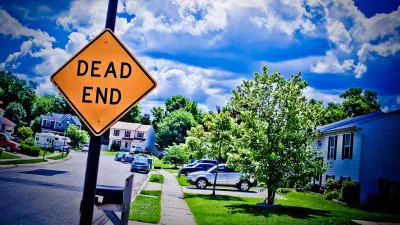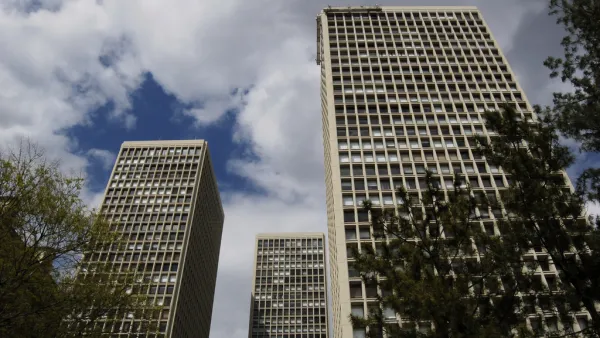Spatial analysis of income and education over time in U.S cities provides further evidence for the “New Donut” theory of the city. Wealthier and more educated residents are more likely to move to the urban core or exurbs than to inner-ring suburbs.

The riots in Ferguson, MO brought mainstream media attention to a phenomenon that has been happening slowly for the last two decades. The old conception of cities as poor, minority-dominated slums surrounded by affluent suburbs has ceased to be an accurate description for most cities. Instead, revitalized urban centers are surging in popularity.
This doesn’t signal abandonment of the suburbs, however. Newer and larger suburbs continue to be built around major metropolitan areas, accounting for most of their population growth, and leaving an inner ring of less desirable older suburbs that will be the new centers of poverty and economic stagnation.
This story has been supported by anecdotal evidence across the country, but researchers have thus far failed to provide statistical evidence. Existing research centers on population growth, but this is an inaccurate gauge of the desirability and economic vitality of an area that has already been urbanized. In fact, a surge in popularity often attracts wealthier residents with smaller household sizes, which may reduce total population.
Instead, Luke Juday looks at income and education as an indicator of who lives in different zones. He looks at four major metropolitan areas: Charlotte, Atlanta, Denver, and Houston. Each is roughly geographically symmetrical and has a single clear city center, making them likely to represent the donut shape. They are also experiencing significant growth, have relatively low housing prices, and have few unique land use restrictions that might distort migration trends.
The results are striking. In 1990, each city had something close to a "hump" graph. Low rates of education and income in the city center gave way to high rates in the suburbs and then fell again in rural areas. Today, this has turned into an "S-curve," with high rates of education and income in the core, low rates several miles outside of it, and high rates in more distant suburbs.
FULL STORY: A funny thing is happening in many US cities

National Parks Layoffs Will Cause Communities to Lose Billions
Thousands of essential park workers were laid off this week, just before the busy spring break season.

Retro-silient?: America’s First “Eco-burb,” The Woodlands Turns 50
A master-planned community north of Houston offers lessons on green infrastructure and resilient design, but falls short of its founder’s lofty affordability and walkability goals.

Delivering for America Plan Will Downgrade Mail Service in at Least 49.5 Percent of Zip Codes
Republican and Democrat lawmakers criticize the plan for its disproportionate negative impact on rural communities.

Test News Post 1
This is a summary

Test News Headline 46
Test for the image on the front page.

Balancing Bombs and Butterflies: How the National Guard Protects a Rare Species
The National Guard at Fort Indiantown Gap uses GIS technology and land management strategies to balance military training with conservation efforts, ensuring the survival of the rare eastern regal fritillary butterfly.
Urban Design for Planners 1: Software Tools
This six-course series explores essential urban design concepts using open source software and equips planners with the tools they need to participate fully in the urban design process.
Planning for Universal Design
Learn the tools for implementing Universal Design in planning regulations.
EMC Planning Group, Inc.
Planetizen
Planetizen
Mpact (formerly Rail~Volution)
Great Falls Development Authority, Inc.
HUDs Office of Policy Development and Research
NYU Wagner Graduate School of Public Service




























